With more exotic animals becoming companions for humans, the bird species is quickly making its way up the most wanted pets list. And because the number of bird species you can easily domesticate is also increasing, you may want to know about some incredible cockatoo facts. These birds have long been a favorite pet, are easy to maintain, and are fun for the whole family. With the bonus of cockatoos learning human speech, their lifelong companionship is another appealing cockatoo fact. But let’s look at other incredible facts about cockatoos to help you decide whether you want one as a pet or they should stay in the wild.
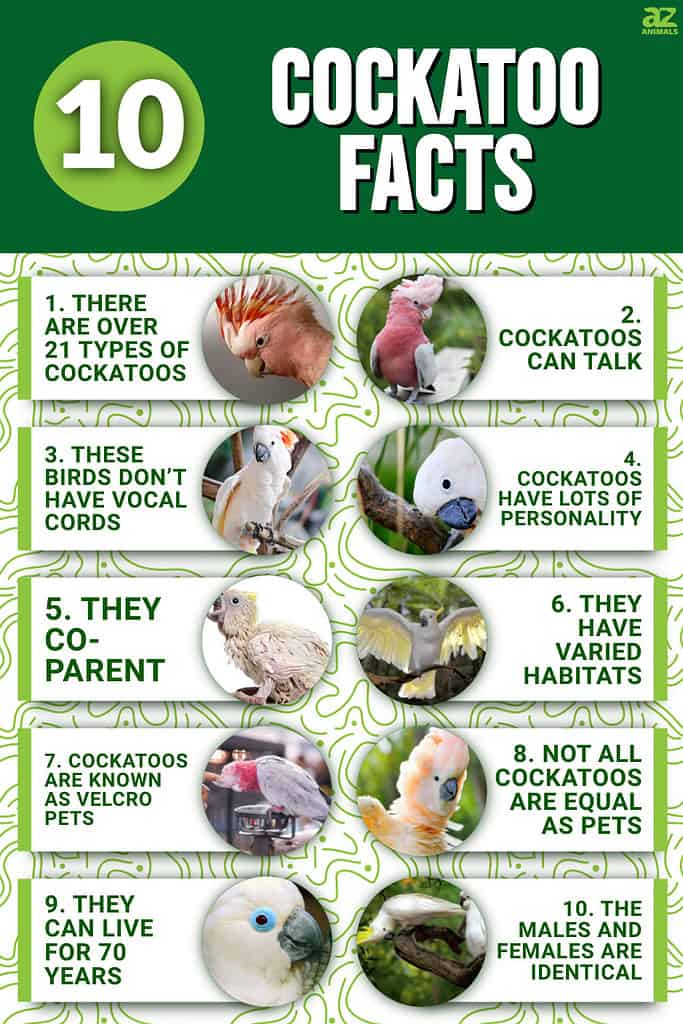
1. There Are Over 21 Types of Cockatoos
If you have ever considered getting a cockatoo as a pet, you will be delighted to know that you have many choices. Most cockatoo species are beautiful, each with color and feather pattern variations. All are intelligent and cocky. Combine these qualities and others, and you have a wonderful pet for life.

It’s a fact that there are over 21 cockatoo species and more subspecies, with Major Mitchell’s cockatoo being one that originates from
Australia
.
©iStock.com/Lakeview_Images
Some of the main species and subspecies include the following:
- Solomons Cockatoo
- Sulphur-Crested Cockatoo (subspecies include the Mathews’ cockatoo, Eleonora Cockatoo, Triton Cockatoo, Citron Crested Cockatoo)
- Moluccan Cockatoo
- Goffini or Goffins Cockatoo
- Red-Vented Cockatoo
- Little Corella
- Long-Billed Corella
- Blue-Eyed Cockatoo
- Major Mitchell’s Cockatoo
- Lesser Sulphur-Crested Cockatoo
- Yellow-Tailed Black Cockatoo
- Gang-Gang Cockatoo
- Red-Tailed Black Cockatoo
- Glossy Black Cockatoo
- Short-Billed Black Cockatoo
- Long Billed-Black Cockatoo
- Palm Cockatoo
- Black Palm Cockatoo
- Galah Cockatoo
- Cockatiel
2. Cockatoos Can Talk
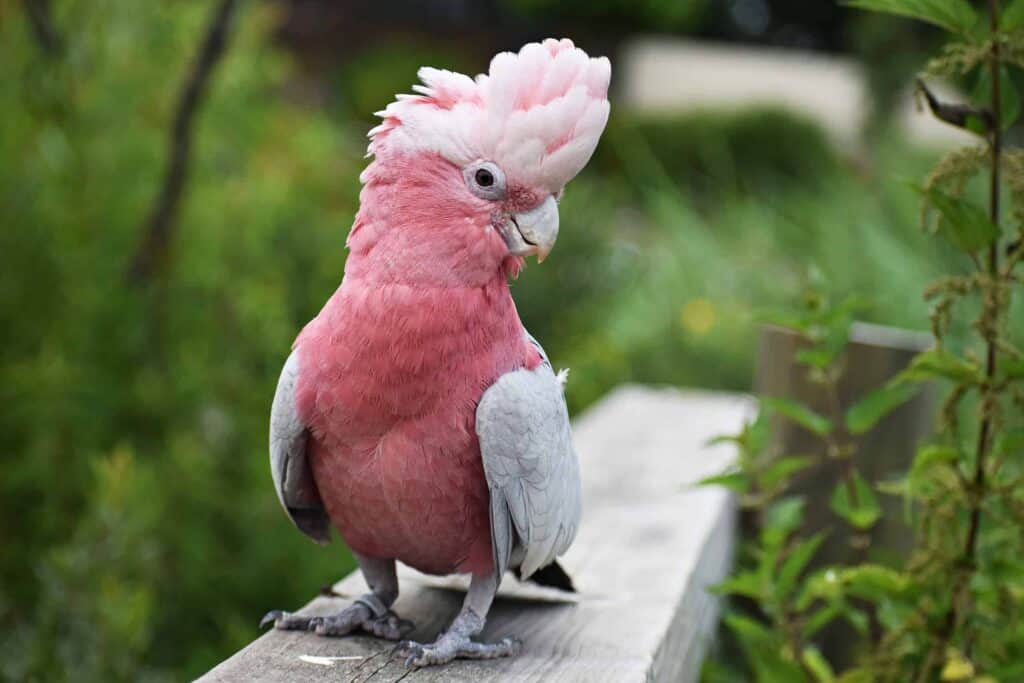
These birds have an incredible noise level that’s been compared to a 747 jet taking off.
©Gabriela Beres/Shutterstock.com
Cockatoos, along with parrots, are part of the Cacatua bird species. They are cheeky birds who, much like parrots, can learn and repeat words and short phrases of human languages. These birds can learn anything between 20 and 1,000 words depending on the species. How many they learn will also depend on how dedicated you are to teaching your pet. However, the standard word range for cockatoos is between 20 and 30. Some researchers maintain that your pet cockatoo won’t understand the word or phrase you teach them but the context in which you use them.
3. These Birds Don’t Have Vocal Cords
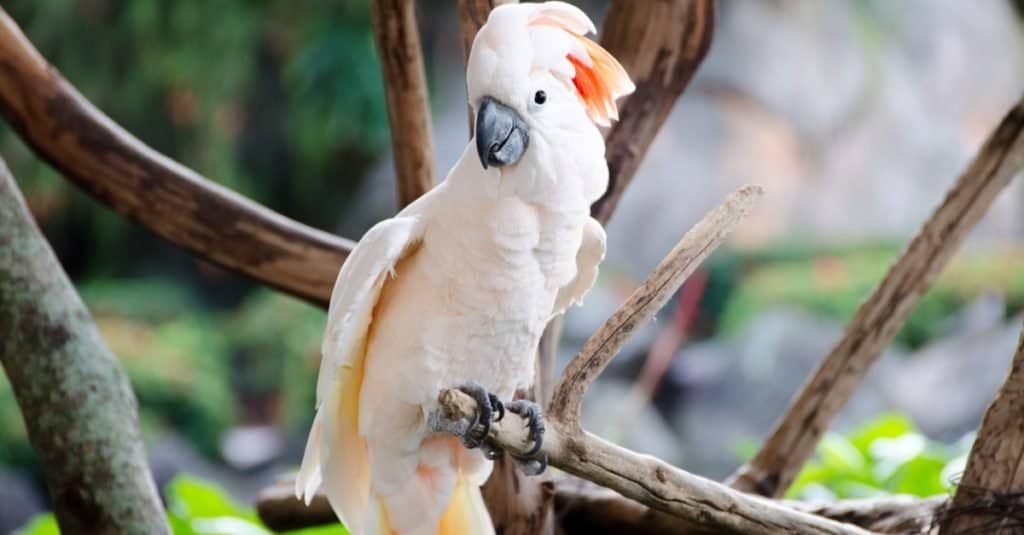
Cockatoos create sounds by manipulating their throat muscles.
©CG3/Shutterstock.com
How do they speak and mimic sounds without vocal cords? These birds don’t mimic sounds using vocal cords because they have none. Instead, they create various sounds by manipulating their throat muscles and directing air over their windpipes or trachea at the point of the syrinx. Ultimately, they alter the shape of the trachea to create sounds with varying depths.
4. Cockatoos Have Lots of Personality
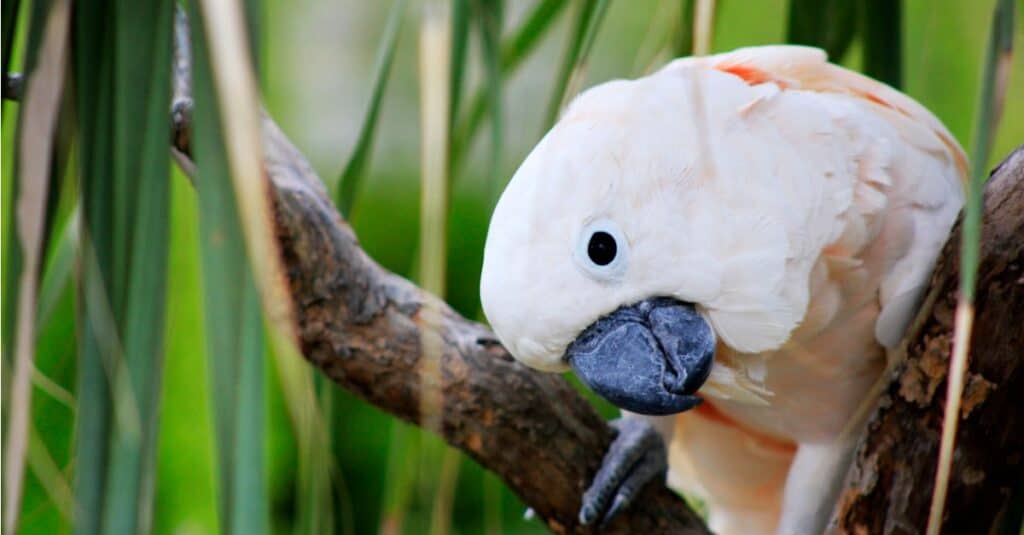
The chirp of a Moluccan cockatoo is comparable to a rock concert.
©iStock.com/Blue_Crystal
Cockatoos are fun pets because they are extroverts. They love making noise, and they love attention. And even if they get a little grumpy and snappy sometimes (who doesn’t), you only need to give them some space. But if you get one as a pet, ensure you provide them with plenty of attention as they are highly social creatures. Ignore them; you will likely have an unhappy, aggressive bird on your hands, which is not okay.
5. They Co-Parent
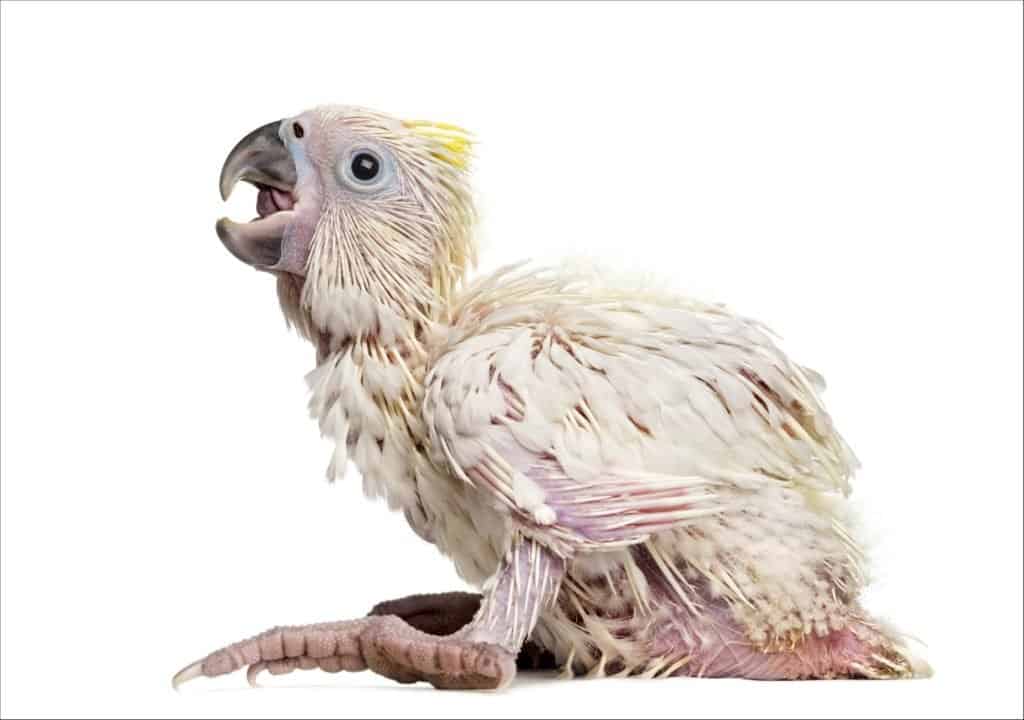
Even when the young are old enough to fend for themselves, the parents keep them close to the rest of the flock.
©iStock.com/GlobalP
A heartwarming fact about cockatoos is that they co-parent. Males and females will pair well before reaching their sexual maturity, and pairs will stick together for their entire mating season. Cockatoos co-parent by taking turns to care for the eggs. Once the eggs hatch, they nurture their young until they are eventually ready to leave the nest. Cockatoo parents are also very protective. Even when the young are old enough to fend for themselves, the parents keep them close to the rest of the flock.
6. They Have Varied Habitats
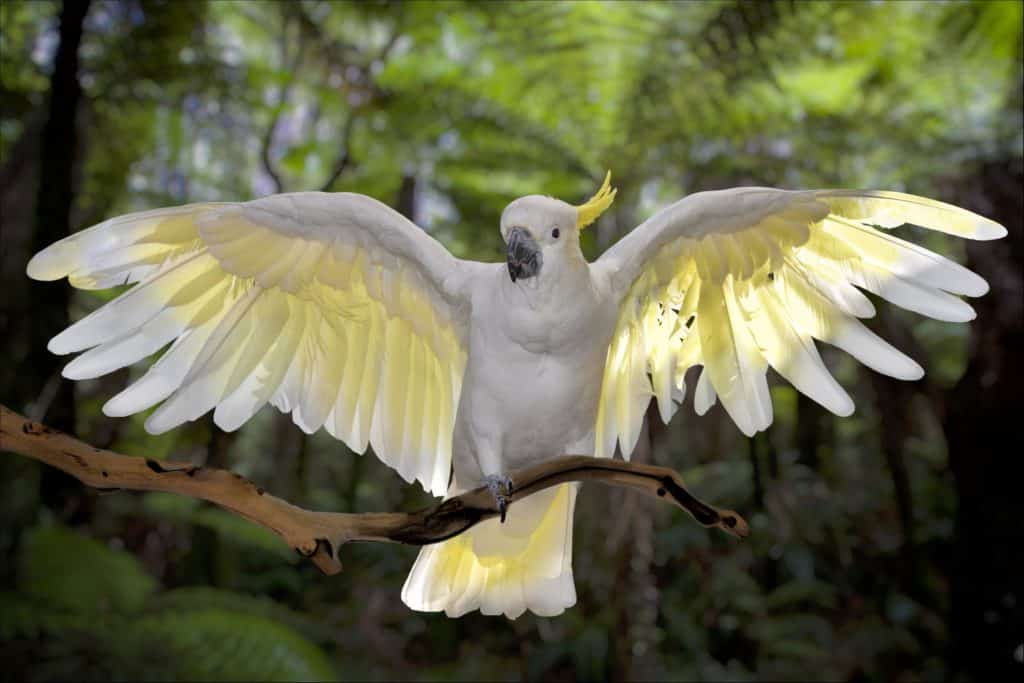
Cockatoos are native to arid, subtropical, and tropical regions.
©Barbara Ash/Shutterstock.com
Fourteen cockatoo species are native to Australia. These birds live in arid, subtropical, and tropical regions in Australia. You also find cockatoos in Tasmania, Papua New Guinea, the Solomon Islands, Indonesia, and the Philippines. Cockatoo flocks in the wild tend to live high in the treetops, also sticking close together for safety and social reasons. If you want a cockatoo as a pet, ensure the environment is warm. Always give them lots of attention so they feel like a valued family member.
7. Cockatoos Are Known As Velcro Pets
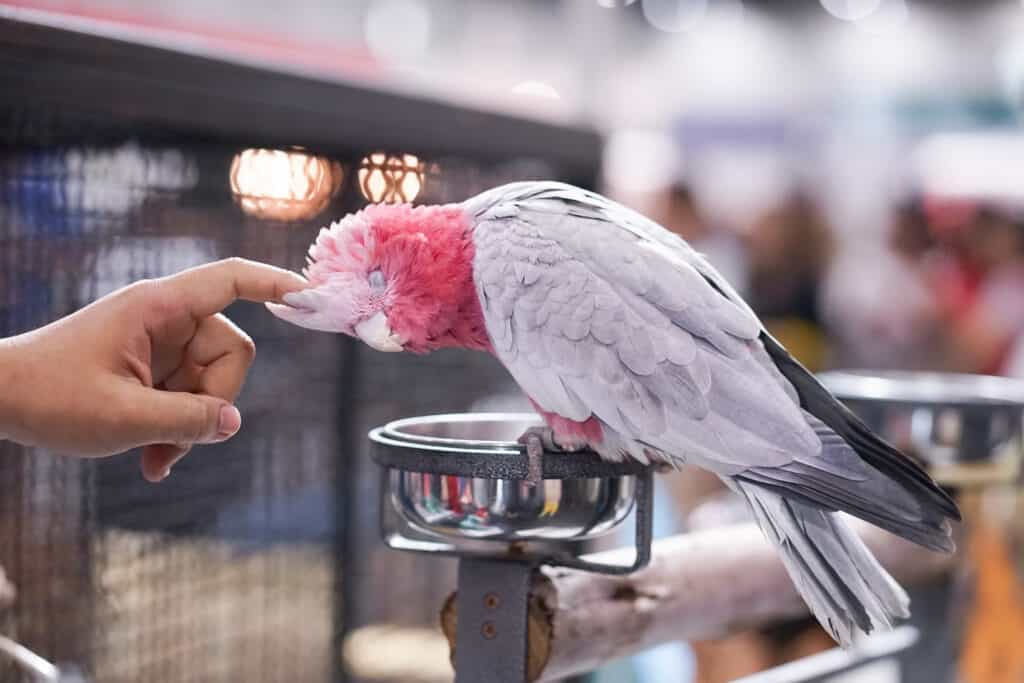
With a strong ‘Velcro’ bond, you will help your cockatoo always feel safe, which is another heartwarming
fact about these birds
.
©enchanted_fairy/Shutterstock.com
If you get your cockatoo at a very young age and pay special attention to them, they will bond with you as they would with their parents. So, you should hand-feed them and allow them to feel you close by while they are still young. This behavior lets them know they are safe and creates a nurturing, strong bond. With a strong ‘Velcro’ bond, you will help your cockatoo always feel safe, which is another heartwarming fact about these birds.
8. Not All Cockatoos Are Equal As Pets
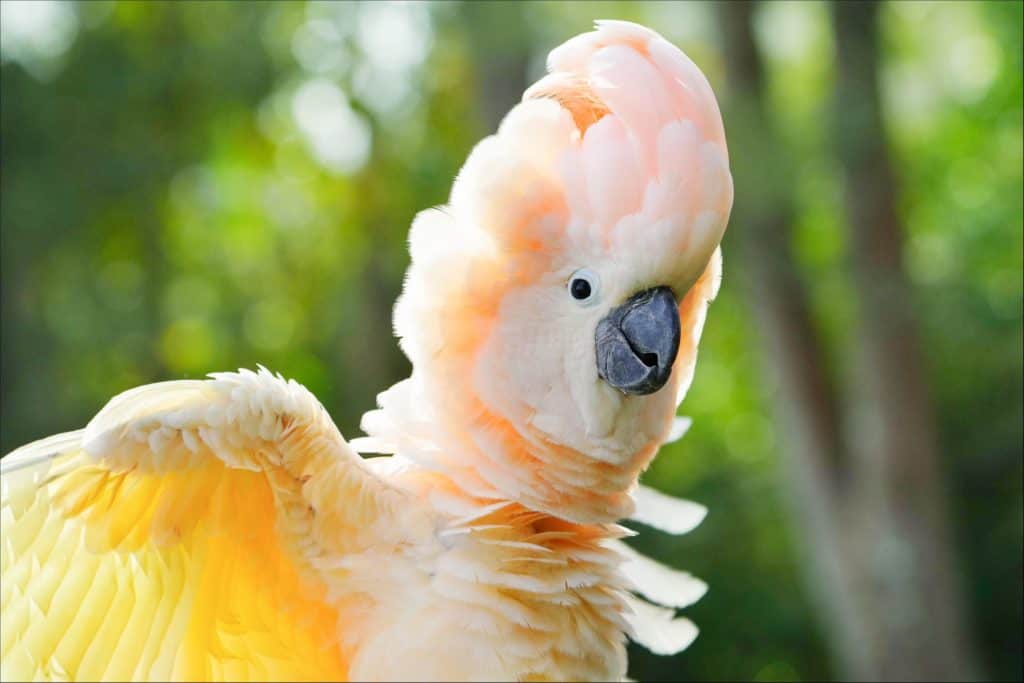
Some cockatoo fun facts are that they live to 70 years in captivity, co-parent, and are often dimorphic.
©Sanit Fuangnakhon/Shutterstock.com
Only a handful of the different cockatoo species are viable for domestication. Cockatoos need to accept you as part of their flock’ if you get them at a more mature age or fully grown. And only the more minor variants are amenable as pets. So, the larger birds reaching far beyond 20 inches make better pets only if you can house them outside in large cages. While it may be appealing to go for the more exotic cockatoo species, experts recommend you start with a smaller, more manageable bird. If you don’t, you may find these birds too challenging to raise, which is unfair to them.
9. They Can Live For 70 Years
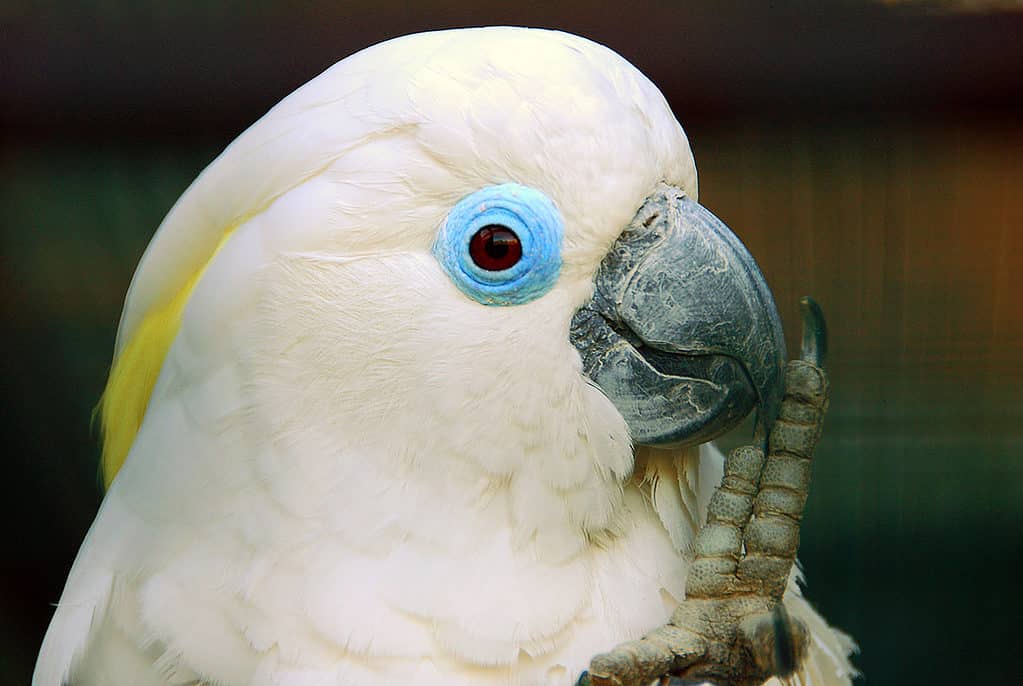
Adopting a cockatoo is a 70-year commitment.
©Tobias / CC BY-SA 2.0 – License
Taking care of a cockatoo as a pet can increase its lifespan to 70 years. In contrast, they typically only live for about 30 years in the wild. These beautiful birds prove that love, care, and affection can increase the lifespan of a living being. And as pets, they avoid predation. However, their survival instincts are well-honed in the wild, prompting these birds to live in flocks high in the trees for protection.
10. The Males and Females Are Identical
While you can tell bird genders apart in many species, this is not the case with cockatoos. Many cockatoo genders are nearly identical, so it is almost impossible to tell one gender from another. This cockatoo fact is known as dimorphism. However, there are visible differences in appearances between some cockatoo species. For instance, it is possible to identify the Umbrella and Black Glossy cockatoo genders. Still, these subtle variations make it a time-consuming challenge to tell them apart.
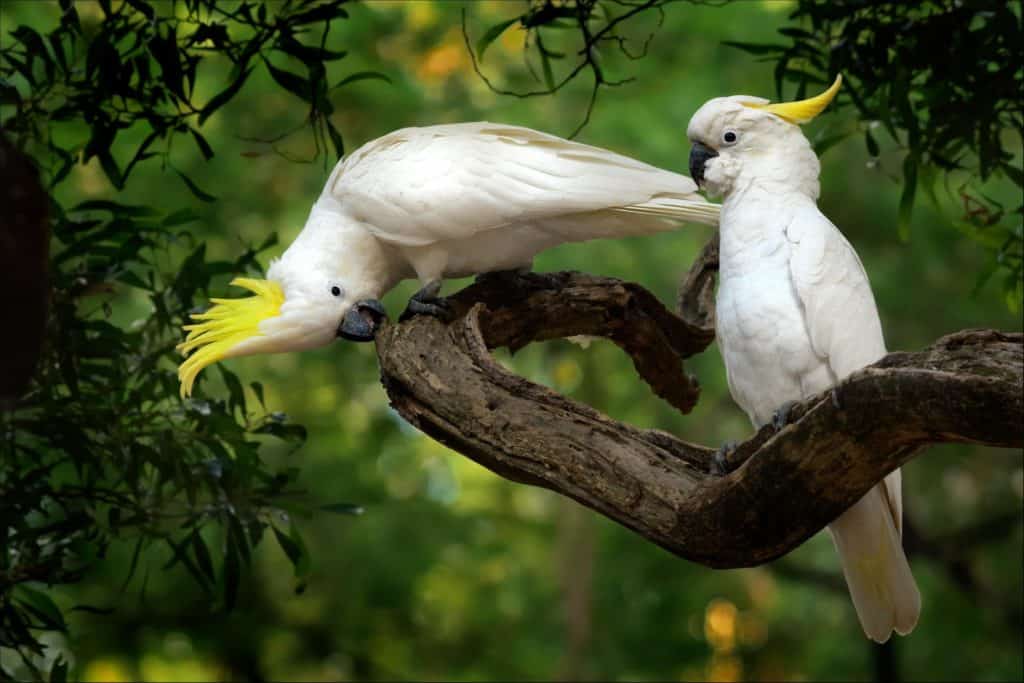
While you can tell bird genders apart in many species, this is not the case with cockatoos.
©iStock.com/phototrip
The photo featured at the top of this post is © Barbara Ash/Shutterstock.com
Thank you for reading! Have some feedback for us? Contact the AZ Animals editorial team.






